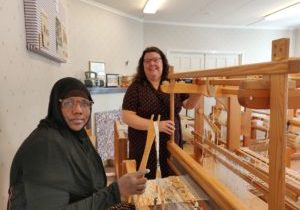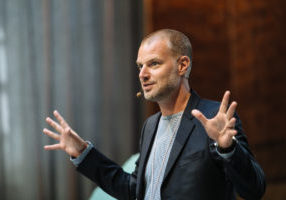
Communicate your cause and other comms tips for social enterprises
July 5, 2018 - Interviews
Our Communications Lead Tove Nordström is one of the authors of the new book Communicating Causes – Strategic Public Relations for the non-profit sector that was launched on 28 June in London with several of the authors – such as Sir Stuart Etherington and Colin Byrne – present. She has co-written one chapter about digital communications alongside digital specialist Ann Longley and has also written one about communications for social enterprises. We caught up with her to get the key insights from the chapter and her best communications tips for social enterprises.
What is the key focus of the chapter?
As the book is both for those within academia studying the subject of communications as well as practitioners working in the field, it includes a top-line introduction to the concepts around social enterprise and good business. But the key focus is the concept of being ‘caught between’ being a professional business as well as an organisation doing good – how do you define this and how do you use it to your advantage when communicating your story.
So, how do you define it?
Good question! Unfortunately, there isn’t one definition of a social enterprise and it also varies quite a bit in different countries where some have introduced legal forms to introduce legal definitions around ownership and profit for example. Ultimately though, the idea around social entrepreneurship is that you’re pursuing a solution to a social or environmental problem in the world through business methods. You run a for-profit business but may re-invest profits back into the business or they’ll go towards the cause you’re aiming to solve. The chapter points at the importance of not getting too caught up in definitions but ensuring you have defined what it is you are doing – if people don’t understand who you are or what you do, they will find it even harder to relate to it and support it.
What other communication challenges are there for social enterprises?
The main storytelling challenge is in most cases the one around the balance of showing your social impact whilst also coming across as a professional business. You need to show you’re doing good in the world but also that you’ve got a solid business and growth plan, and you need to do it in a clear way, because this confusion between the two can lead to less defined communications. There is also an increasing number of corporate businesses showcasing their social good, which means the competitive market for social enterprises is growing – a social enterprise can’t just rely on the social good aspect anymore as it also needs to have a product or service, as well as communications, that can compete with the corporate equivalent.
Other challenges often relate to the fact that many social enterprises may be smaller organisations with low budgets, which limits what you can do in terms of big campaigns and advertising for example.
And what are the opportunities?
Turning the challenges into opportunities. Making the most of the fact that you’ve got some great stories of social impact to tell and that this is what really differentiates you from the standard corporate business. And from the other perspective – showing that you’re creating social impact but that you also have a sustainable financial model and that you therefore can generate your own income instead of having to ask for donations or rely on grants.
The challenge around low budgets can also be turned into an opportunity as it forces you to be more creative and efficient with what you’ve got, which could actually give you better results.
I would also say that the growth of the sector is an opportunity, despite the growing number of competitors, as it will eventually mean a clearer definition and subsequently a clearer understanding amongst customers and other stakeholders.
What would be your top tips for a social enterprise looking to improve its communications?
Be really clear with your vision, mission and key messaging, and stay consistent through all your communications. Don’t try to do too much – spend time on figuring out who your key stakeholders are and how you can best reach them and focus your efforts on this. If you’ve got low budgets, then digital channels like social media will probably be a good option as most are free or cheap, and they will also give you the benefit of being able to engage easily with your stakeholders.
An important advantage for a social enterprise to make the most of is the fact that the reason for its existence is a story itself. It may be the founder’s personal story of why he or she set it up, the cause it is supporting, the impact it is having on its community, or how doing good is good business. Try to establish your most engaging story or message and build your communications around this.
Be clear with what differentiates you from other competitors and make the most of the fact that you’re not just any business, you’re also doing great things for the world. Also, make the most of the fact that this sector is growing and show you’re leading the way when it comes to both social good as well as the future of business. Be confident – thought leadership can take you far and you’re the expert at what you do so go out and tell your story with pride!
If you want to find out more about the book or speak to Tove about communications then you can reach her on tove.nordstrom@se-forum.se










